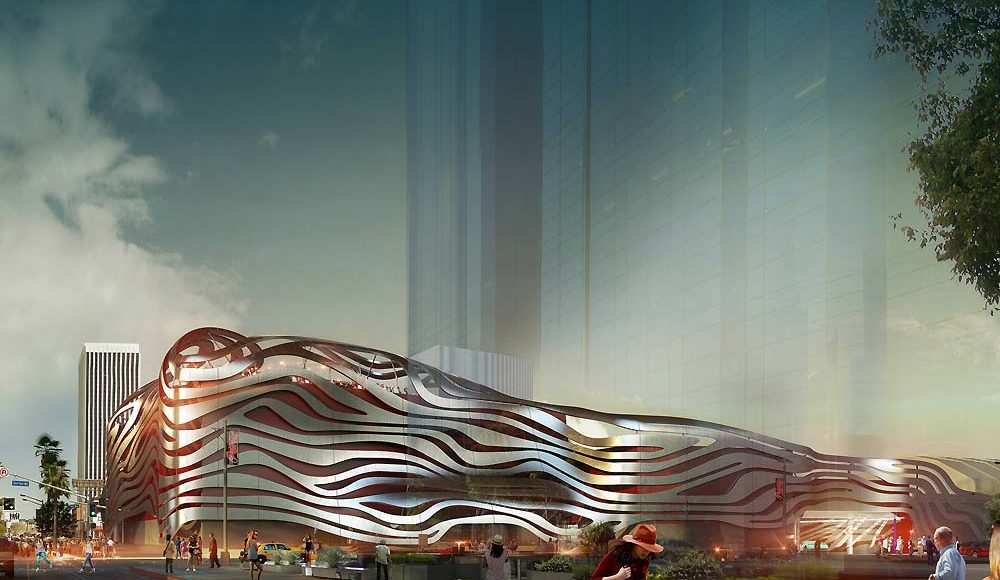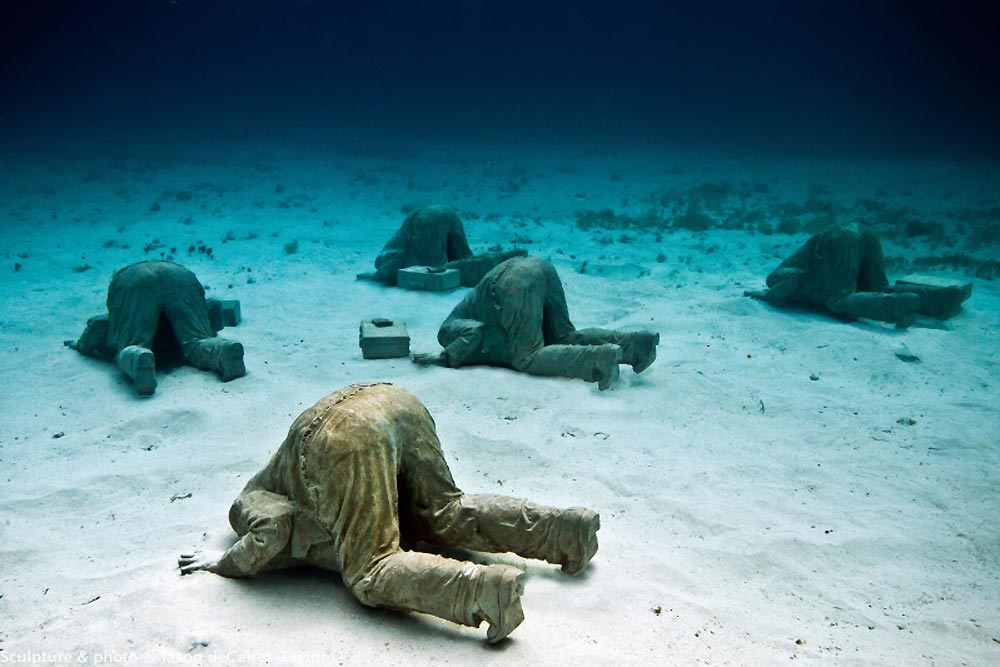By Ernest Kearney — The other night my lovely wife Marlene and I were out walking with a couple of friends, after a pleasant evening of theatre at the Wallis, when somehow the conversation turned toward the topic of Los Angeles architecture.
Now Marlene and I are both great admirers of this city’s architectural wonderland.
Yes, New York and Chicago have far more venerable edifices to offer than L.A., but whereas The Big Apple and the Windy City have five or six distinct, and very prominent, styles or schools of architectural design, in L.A. you have Greek Revival, Neo-Romanesque, Italianate Style, Queen Anne, Eastlake, Victorian, Carpenter Gothic, Second Empire, Monterey Style, Bungalow Style, Prairie School, Shingle Style, French Châteauesque, Colonial Revival, Mission Style-Revival Spanish Renaissance, Churrigueresque Style, Moorish, Spanish Colonial Revival, Hansel & Gretel, Mediterranean Revival, Beaux Arts Style, Egyptian Revival, Craftsman, Georgian, Tudor Revival, French Renaissance, Mayan, Art Deco, PWA Moderne, International, Streamline Moderne, American Perpendicular, Expressionist/Surrealist Style, a couple of our own homegrown schools—Programmatic and Googie; in addition to a number of others I’m probably overlooking.
The reality of L.A. is, and likely always will be, when it comes to a question of diversity; we win.
But on the night in question, our friends surprised us by launching into a tirade of abuse on one of the city’s newest additions: the recently re-realized Petersen Automotive Museum adorning the southeast corner of Fairfax and Wilshire.
This took Marlene and I both aback as we had been great admirers of the new design. What was to become the Petersen served as a department store from 1965 to 1986, and its style served as a compliment to the Los Angeles County Museum of Art which back then was, more or less, a knock-off of the Music Center.
The department store closed its doors and sat vacant for six years, until publisher Robert Petersen selected it to house his massive collection of classic and vintage motorcars, and suddenly L.A. was home to one of the most comprehensive automotive museums in the world.
In 2015 the building was given a long overdue renovation costing $125 million with the structure’s exterior façade reconfigured by Gene Kohn and Trent Tesch of the architectural firm Kohn Pedersen Fox.
Marlene and I were immediately impressed by the boldness and originality of the work and were pleased by its presence in, what is, our own neighborhood.
Our friends however claimed that the majority of reviews the new Petersen received were overwhelmingly critical.
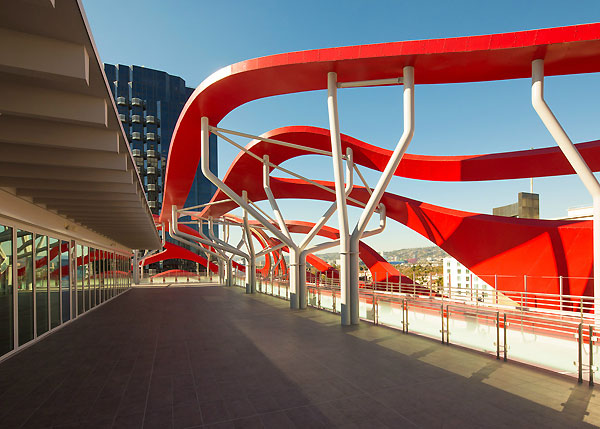
Images of The Petersen Automotive Museum (Courtesy of Petersen Automotive Museum and Kohn Pederson Fox)
Once home, sitting before my office computer, a quick perusal of the internet revealed this was indeed the case.
Christopher Hawthorne, the Los Angeles Times’ architecture critic referred to the new exterior as “raucous, happily tasteless” and warned against exposing one’s “unprotected corneas” to it as though there was the danger of being rendered into a pillar of salt by the sight of it.
Carolina A. Miranda, also of the L.A. Times dubbed it, “The Edsel of architecture.” Writing for L.A. Observed, Kevin Roderick proclaimed it a “different kind of hideous.”
Julia Ingalls in an article for Archinect.com sought to cast the Petersen as the over-hyped Titanic of Wilshire Boulevard with herself in the role of iceberg.
“It’s a cartoon of aesthetic gesture, lacking any substance,” she fired off. “What’s troubling is that it’s not a private joke but a public failure, a blemish in what was shaping up to be one of L.A.’s most genuinely gorgeous and authentic urban corridors.”
She continues along the same course dismissing it as “an insult to the public realm,” and in case she wasn’t making her feelings clear, follows that up by condemning the Petersen as “an affront to our urbanity.”
Well, shut my mouth wide open.
Architecturally speaking, the fire at the Triangle Shirtwaist Factory managed to pull in better reviews.
Well, I will still go on record as stating that I find the newly designed Petersen splendid, in both concept and execution. I enjoy being “the voice in the wilderness” which I have been with such regularity that the “wilderness” is sending me summons to serve on jury duty there.
Those in disagreement with me I acknowledge as being far more knowledgeable than I in the aesthetics and science of the draftsman’s discipline.
I respect their opinions; even if they are a choir of wrongheaded intellectual limitarians.
My field is not architecture but history. The study of which shows, that nearly every structure, destined to achieve iconic status, were first welcomed with bellows of abuse.
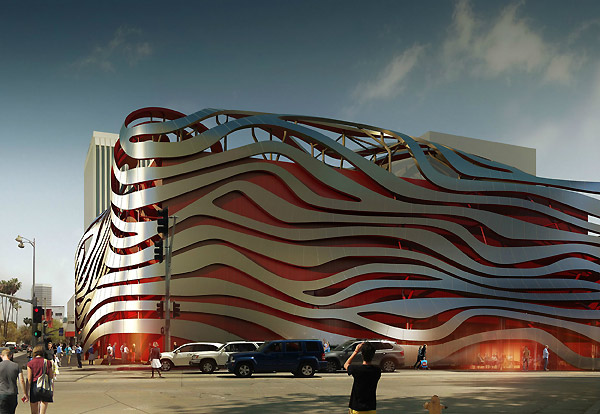
Images of The Petersen Automotive Museum (Courtesy of Petersen Automotive Museum and Kohn Pederson Fox)
While the Twin Towers have now been sanctified by the martyrdom of 9-11, the two structures designed by architect Minoru Yamasaki were not well received by either the critics or the average New Yorkers, with one wag dismissing the Twin Towers as “the boxes the Empire State Building and the Chrysler Building were delivered in.”
In 1976 Vincent Canby, the film critic for the New York Times, reviewing the Dino De Laurentiis’ remake of King Kong even panned the choice of the Towers for the film’s climax rather than the Empire State Building.
The Spanish architect Santiago Calatrava, is easily one of the most innovative architects in the world, but his projects from the Milwaukee Art Museum to Brazil’s Museum of Tomorrow have met a perfect storm of disapproval. Calatrava’s latest work, the budget plagued and long delayed World Trade Center Transportation Hub in New York, has been derided as everything from a “giant gray-white space insect” to “a kitsch stegosaurus.”
Another Spaniard, Antoni Gaudi (1852-1926) produced architectural works that defied easy classification, leading to critics internationally pouring abuse on him and his projects which can be described as ornate hodge-podge assemblages of neo-gothic, baroque, Moorish, and Victorian elements with a pinch of Dr. Seuss thrown in. His detractors even put forth his name was the etymological source of the word “gaudy” (It wasn’t.) Today most of his surviving works have been given World Heritage status by UNESCO.
And as difficult as it is to imagine today, back in 1887, a Committee of Three Hundred was formed in Paris which included the most prominent architect of the day, as well as such leading figures in the arts as Guy de Maupassant and Alexandre Dumas to deliver a protest to the French government against a proposed project intended to serve as the centerpiece for the Exposition Universelle, the French World’s Fair planned for 1889. The protest opened with:
“We writers, painters, sculptors, architects, passionate fans of the beauty, until now intact, of Paris, hereby protest with all our force and our indignation, in the name of French taste … against the construction in the very heart of our capital of the useless and monstrous – Eiffel Tower.”
Yep, the French hated the Eiffel Tower even before it was built. During its construction it was referred to as a “hulking metal beast crouched on all fours” that many feared would fall and crush the city one day.
Now back at that evening at the Wallis, I noticed in the criticism of our friends, that they hadn’t picked up on what the Petersen’s exterior was meant to represent; the testing of a vehicle’s aerodynamic qualities.
Using steel ribbons layered over their structure’s surface, Kohn and Tesch’s design captures “smoke wands” in motion, the method used to determine a vehicle’s laminar flow, the drag and down force inherent in its design, by placing it in a wind tunnel and observing how smoothly a smoky airflow negotiates over its contours.
I can overlook that this was missing from the assessments of my friend’s at the Wallis, but that it was also missing in all of the “professional” reviews that I read was a little more surprising and a great deal more disturbing.
Now I have never understood the principles that make a combustible engine function, nor had the least inclination to learn them. How does a car work? You get in it. Turn a key. Magic!
Yes, as a habitant of the 21th century I do drive, but on any given day I’d rather be going by horseback. Cars, in fact, bore me to tears.
Now earlier this year the New York Times published a list of the “Ten Coolest Museums in the World.” That Los Angeles was absent from that list comes as no surprise. New York’s petulance towards L.A. is understandable.
From Lincoln’s decision he’d move to the West Coast, after finishing his second term, to “Tinsel Town’s” early outshining of the “Great White Way,” New York felt herself being eclipsed.
Now I do love New York, the city has a lot of history, even though L.A. has a far longer one. ![]()
However unlike New York, which has suffered a conspicuous loss in population these last few years, L.A. appears to have a future as well.
But my main problem with the New York Times’ list of the world’s ten “coolest” museums is not L.A.’s absence, but that the writer of the piece apparently needs a refresher course on American Slang 101.
Refer to Harper and Row’s Thesaurus of American Slang and you’ll find among the listed synonyms of “cool”: “cooking, far-out, funky, groovy, way out, wild.”
Now the sole museum on the NYT’s list that I didn’t know was its only full-out, hands-down totally cool entry; Cancun Mexico’s Museo Subacuatico De Arte a collection of 500 sculptures by Jason deCaires Taylor and others featured in an underwater gallery. Okay, that’s cool!
The other nine entries….eh, not so much.
New York’s own Metropolitan Museum of Art, AKA “the Met,” is amazing. David’s The Death of Socrates, Jan van Eyck’s Crucifixion and Last Judgment, massive Islamic and Greek collections – awe inspiring and humbling. “Cool” doesn’t jump to mind.
The Deutsches Museum in Munich is probably your definition of “cool” if you find your nether regions going all warm and moist at the mere thought of the history of mining tools and paper.
If MacDonald’s Happy Meals and Pokémon ranks high up on your cool list, then The Children’s Museum of Indianapolis and Denmark’s Lego House probably fit right in.
And the Mutter Museum certainly belongs on that list if your definition of “cool” involves running out into the night screaming and spending the next few days trembling under your bed.
Missing from the Times’ list is such certifiably cool cultural depositories as Wisconsin’s House on the Rock and the reigning champion of Museum Coolhood L.A.’s very own Museum of Jurassic Technology.
Does the Petersen belong on that list? I don’t know. But I’ll broadcast it for the world to hear: The Petersen Automotive Museum is a great museum. It has to be, when the very epitome of an anti-motorhead like myself, who regards NASCAR as America’s secret shame ![]() starts thinking about rolling up the shirt sleeves, flipping the hood of my rod and getting grease on my mitts; that’s after an afternoon spent walking through it.
starts thinking about rolling up the shirt sleeves, flipping the hood of my rod and getting grease on my mitts; that’s after an afternoon spent walking through it.
Not only is the Petersen a wonderful addition to my neighborhood but it adds hope to the envisioned Museum Row that sadly has been realized more in hype than reality.
The blame for this can be firmly laid at the feet of this city’s civic leader’s stubborn short sightedness; a myopic disorder that has cost L.A. dearly.
There was the utterly whimsical Carole & Barry Kaye Museum of Miniatures which opened across the street from LACMA in 1992 and housed such wonderful items as a small scale model of the Titanic constructed from 75,000 toothpicks, and the richly detailed historical dolls of George Stuart.
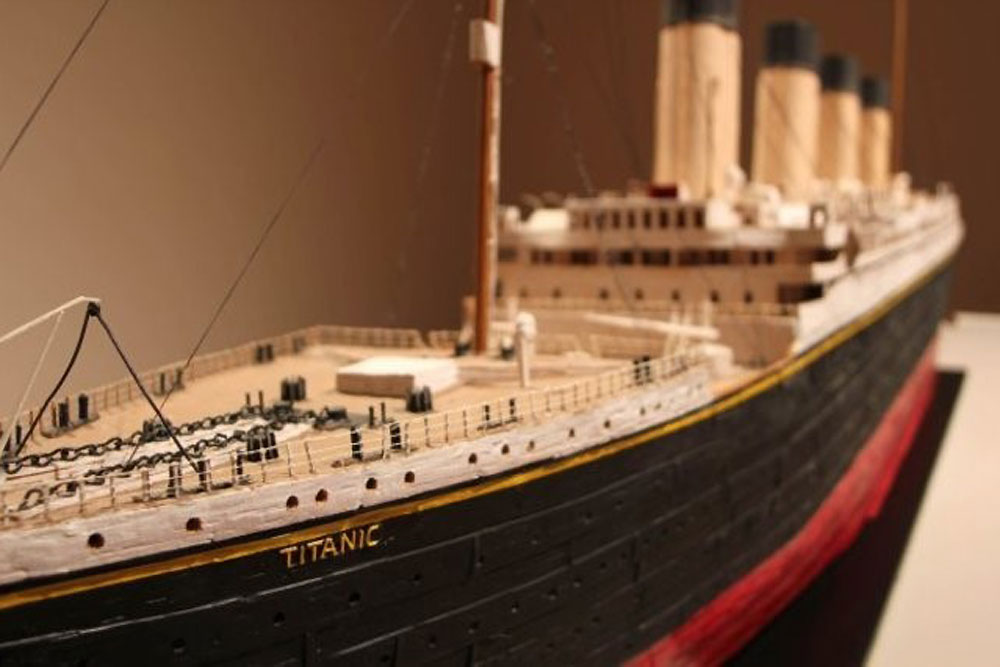
A 10-foot-long model of the Titanic, constructed from 75,000 toothpicks, was part of the Baker Museum Ship to Shore Exhibition in 2012 having made its way to Naples from Los Angeles as a donation from the Carole and Barry Kaye Museum of Miniatures. (Courtesy of Naples Daily News)
When the Kayes retired to Florida they tried unsuccessfully to reach a deal with the city that would have allowed them to donate their collection to L.A. The city fathers’ lack of interest lead to the museum’s closure in 2000.
In 2012 the collection was donated to The Naples Museum of Art and Philharmonic Center for the Arts.
But the most egregious loss to L.A. was Debbie Reynolds’ collection of Hollywood memorabilia. Over 3,500 props, costumes and artifacts she had spent twenty years accumulating; a pair of the ruby slippers from the Wizard of Oz, the white dress worn so famously by Marilyn Monroe in The Seven Year Itch, Elizabeth Taylor’s headdresses from Cleopatra.
Never able to convince the city to provide a facility for these relics from Hollywood’s Golden Age, the collection was finally auctioned off after her death and is now scattered to the far corners of the world.
This town has lost too much for my money, so I say let’s enjoy the Petersen’s quirky exterior, be thankful for its presence and share in celebrating L.A.’s love affair with the “horseless carriage.”
Here’s to the Petersen Automotive Museum, not only a great museum, our great museum.
♦ ♦ ♦
![]() The first people to settle in the L.A. basin were the Chumash about 10,000 years ago. They were the first to travel what is now Wilshire Blvd., making it the nation’s oldest thoroughfare.
The first people to settle in the L.A. basin were the Chumash about 10,000 years ago. They were the first to travel what is now Wilshire Blvd., making it the nation’s oldest thoroughfare.
![]() Hey, it’s not really a race when they’re just going around in circles.
Hey, it’s not really a race when they’re just going around in circles.
Like us on Facebook
Follow us on Twitter @theTVolution
Stay Updated: Find our Subscription Box on the Left Rail
We Thank You for Supporting the Voices of TheTVolution





